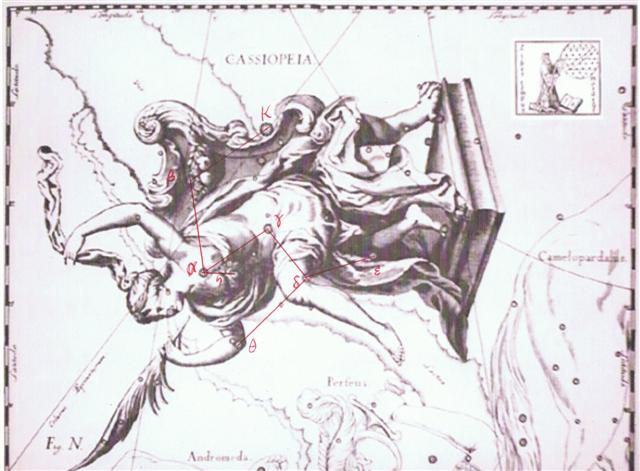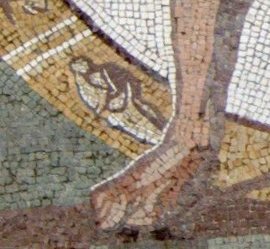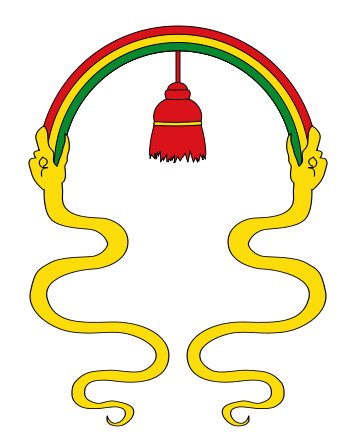On Easter Island the new year was beginning when the sooty terns arrived: ... The sooty tern (manu tara) comes to breed in large numbers in July or August off the southwestern point on three rocky islets ...
They became visible (and very audible) and a new year was beginning.
At Bb11-20 there was a Knee (Ksora, *20), i.e. that of the left uplifted leg of Cassiopeia,
and half a year away was 71 Virginis (*203):
Possibly the denomination 71 was chosen because it hinted at the equation 26000 (precessional cycle) / 365.25 (days in a year) = 71 years per right ascension day - as if 71 Virginis measured out day 1.
*203 (71 Virginis) - *183 = *20 (April 10, 100). When the Sun reached the left Knee of Cassiopeia in day 365 + 100 = 465 (April 10) then the star 71 Virginis would be visible close to the Full Moon at the first right ascension day of Mons Maenalus:
... Mons Maenalus, at the feet of Boötes, was formed by Hevelius, and published in his Firmamentum Sobiescianum; this title coinciding with those of neighboring stellar groups bearing Arcadian names. It is sometimes, although incorrectly, given as Mons Menelaus, - perhaps, as Smyth suggested, after the Alexandrian astronomer referred to by Ptolemy and Plutarch. The Germans know it as the Berg Menalus; and the Italians as Menalo. Landseer has a striking representation of the Husbandsman, as he styles Boötes, with sickle and staff, standing on this constellation figure. A possible explanation of its origin may be found in what Hewitt writes in his Essays on the Ruling Races of Prehistoric Times: The Sun-god thence climbed up the mother-mountain of the Kushika race as the constellation Hercules, who is depicted in the old traditional pictorial astronomy as climbing painfully up the hill to reach the constellation of the Tortoise, now called Lyra, and thus attain the polar star Vega, which was the polar star from 10000 to 8000 B.C. May not this modern companion constellation, Mons Maenalus, be from a recollection of this early Hindu conception of our Hercules transferred to the adjacent Bootes?
... Ta'aroa tahi tumu,
'Ta'aroa origl. stock' - most commonly Ta'aroa or Te Tumu -
existed before everything except of a rock (Te Papa) which he
compressed and begat a daughter (Ahuone) that is Vegetable Mole. Ahuone means 'earth
heaped up' - a widespread name for the Polynesian first woman. It sounds as
if Cook also heard the term applied to the banks of humus and rotting
material on which taro is grown. In the English of his day this was
known as 'vegetable mould' ... 71 Virginis was 222 days beyond the place where the navel string had been severed (kua motu te pito o te fenua):
When the Sun reached the Rain star (Matar) in the Pegasus constellation this was 224 days before October 10 (283), i.e. it happened in February 28 (31 + 28 = 59 = 283 - 224):
Half a year away was August 29 (225 + 16 = 241), at which place the stars rising with the Sun in August 13 (at Bb5-35, 198 = 214 - 16) would return to visibility.
In the Golden Era of the Bull these stars (the Knot etc) would have been located 64 days earlier in the year, viz. in JUNE 10 (161 = 225 - 64). ... Midsummer is the flowering season of the oak, which is the tree of endurance and triumph, and like the ash is said to 'court the lightning flash'. Its roots are believed to extend as deep underground as its branches rise in the air - Virgil mentions this - which makes it emblematic of a god whose law runs both in Heaven and in the Underworld ... The month, which takes its name from Juppiter the oak-god, begins on June 10th and ends of July 7th. Midway comes St. John's Day, June 24th, the day on which the oak-king was sacrificially burned alive. The Celtic year was divided into two halves with the second half beginning in July, apparently after a seven-day wake, or funeral feast, in the oak-king's honour ... Due to the effects of the precession (64) and the change from observations at the return to visibility to calculated true heliacal days (16) the day numbered 161 (for JUNE 10) could be reused (re-membered) in the era of rongorongo. Because 64 + 16 = 80 (March 21, 0h). August 29 (241) was 80 days after June 10 (161), i.e. the right ascension day number was *161 (Bb6-11):
The creator of the B text could have indicated this place (Bb6-12) was a leap day: ... The leap day was introduced as part of the Julian reform. The day following the Terminalia (February 23) was doubled, forming the 'bis sextum - literally 'double sixth', since February 24 was 'the sixth day before the Kalends of March' using Roman inclusive counting (March 1 was the 'first day'). Although exceptions exist, the first day of the bis sextum (February 24) was usually regarded as the intercalated or 'bissextile' day since the third century. February 29 came to be regarded as the leap day when the Roman system of numbering days was replaced by sequential numbering in the late Middle Ages ... ... The four males and the four females were couples in consequence of their lower, i.e. of their sexual parts. The four males were man and woman, and the four females were woman and man. In the case of the males it was the man, and in the case of the females it was the woman, who played the dominant role. They coupled and became pregnant each in him or herself, and so produced their offspring. But in the fullness of time an obscure instinct led the eldest of them towards the anthill which had been occupied by the Nummo. He wore on his head a head-dress and to protect him from the sun, the wooden bowl he used for his food. He put his two feet into the opening of the anthill, that is of the earth's womb, and sank in slowly as if for a parturition a tergo. The whole of him thus entered into the earth, and his head itself disappeared. But he left on the ground, as evidence of his passage into that world, the bowl which had caught on the edges of the opening. All that remained on the anthill was the round wooden bowl, still bearing traces of the food and the finger-prints of its vanished owner, symbol of his body and of his human nature, as, in the animal world, is the skin which a reptile has shed ...
|
||||||||||||||||||||||||||||||||||||||||||||||||||||||||||||||||||||||||||||||||||||||||||||||||||||||||||||||||||||||||||||||||||||||||||||||||||||||||||||||||||||||




















